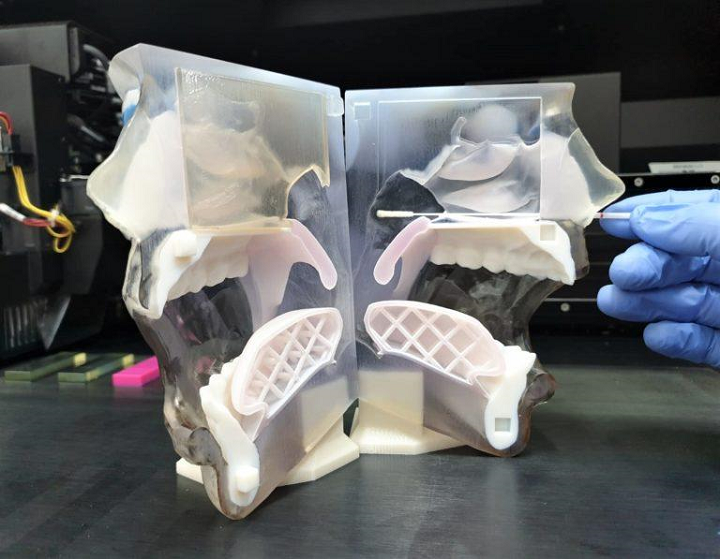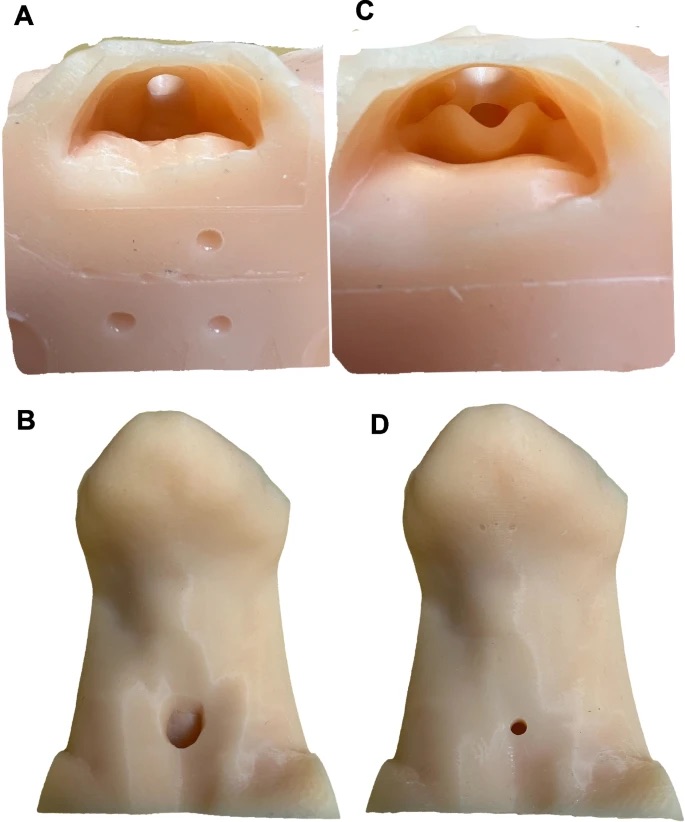3D Printed Medical Trainers Give First Responders Key Familiarity with Altered Airways, Study Shows
The medical field has been one of the greatest success stories for additive manufacturing (AM), with AM now touching virtually every market segment within the healthcare industry. According to Additive Manufacturing Research, the medical 3D printing segment is now worth $2.7 billion, as of 2023. Keeping in mind the wide range of examples to choose from, one particularly fruitful example of the role of 3D printing in the medical field is 3D printed training devices.
This was true long before COVID, but the pandemic gave rise to both an acceleration and a diversification to the ways in which 3D printing is used to train medical students and professionals. For instance, in 2020, Singapore’s Q & M Dental Group worked with domestic 3D printing hub Creatz3D to produce medical mannequins for training in nasal swab testing. The process became the basis for a curriculum that helped professionals as well as non-professional volunteers to quickly learn effective methods for testing patients using nasal swabs.

Thus, more and more, those in the medical profession are realizing the utility of AM for enabling those on the frontlines to refresh their existing skillsets, gain familiarity with new ones, and to generally keep apace with the latest advances in healthcare. One of the latest examples of this was detailed in an article published in the medical journal BMC Medical Education titled, “A deployable curriculum with 3D printed skills trainers for altered airway management.”
Altered airway anatomy (AAA) is the term used for patients who have undergone either a tracheostomy or laryngectomy. Tracheostomies are surgeries done on the trachea, or windpipe, to help patients breathe, whereas laryngectomies are performed to remove the larynx, or voice box. According to the researchers, most healthcare workers struggle to understand and treat patients who have undergone these procedures, leading to serious mistakes and even death. However, better training and teamwork in hospitals have been proven to greatly improve care for these patients. As the study points out:
“Despite significant anatomic differences and resultant airway management strategies between tracheostomy and laryngectomy patients, less than 5% of frontline providers can describe the anatomic differences, and only 41% administered oxygen via the correct route in laryngectomy patients. …Tracheostomy-related adverse events account for up to 50% of airway-related deaths and hypoxic brain injury within critical care units.” On the other hand, research has borne out the positive impact of continued education for medical professionals when it comes to AAA management: “Evidence has shown that a protocolized and multidisciplinary approach to tracheostomy care decreases morbidity and mortality. …With this in mind, we endeavored to develop a readily portable and deployable curriculum to improve competency in AAA knowledge and management for non-surgical providers.”

That last sentence quoted above is the key to what’s critical about this specific study. The same curriculum was tested for a study, published about a year ago by most of the same authors, in which the course was taught to medical students. But, as is noted by the more recent study, “non-Otolaryngology providers such as those in the discipline of Anesthesiology, Emergency Medicine, or Critical Care are often the first responders and must act to stabilize the airway before specialty surgical providers arrive”.
Thus, medical professionals who aren’t ear, nose, and throat (ENT) specialists are likely the demographic who could benefit most from an effectively executed training course. The course utilizes tracheostomy and laryngectomy trainers “based off 3D models segmented from a CT of the neck of a normal adult male and an adult male who has previously undergone laryngectomy,” which were in this case printed by Ohio State University’s Medical Modeling, Materials, and Manufacturing Lab (M4 Lab).
Using anesthesiology residents as a test group, the 75-minute instructional session centering on the 3D printed trainers led to 42 out of 42 of those who took the course to complete “5/5 assessed tasks successfully, as assessed by Otolaryngology providers.” In addition to the already-mentioned advantages of portability and deployability, the researchers also noted the low cost of the trainers, enabled by 3D printing as a major benefit of the curriculum.
Given how important lifelong education is for medical professionals in particular, the market for frontline providers for all medical training devices would seem especially ripe. There is also presumably great potential for securing public funding for such applications, given the fact that frontline providers are frequently also public service workers.
Moreover, getting one’s foot in the door with a first successful application could have unusually favorable odds for selling customers on additional applications. As is the point of the study, frontline providers have to be generalists as much as specialists, meaning they’re in need of training for a wide variety of medical skills. In this context, as soon as customers have seen the benefit of 3D printing in one case, it should be relatively easy to illustrate the benefits in all other relevant cases.
Subscribe to Our Email Newsletter
Stay up-to-date on all the latest news from the 3D printing industry and receive information and offers from third party vendors.
Print Services
You May Also Like
Specialty Manufacturer Plansee Pursue Refractory Metal 3D Printing via Incus
Austrian slurry stereolithography (SLA) original equipment manufacturer (OEM) Incus has sold a Hammer Evo35 3D printer to Plansee. Also Austrian, Plansee specializes in MIM, powder metallurgy, and other manufacturing processes...
One Click Metal Brings Low-cost Metal 3D Printing to India via Altem Technologies
One Click Metal has partnered with Altem Technologies to bring its inexpensive laser powder bed fusion (LPBF) solution to India. Here, we see two powerful trends in 3D printing collide:...
Low-cost “Suzy” Polymer Powder 3D Printer is Faster and Cheaper than Past Models
Polish laser powder bed fusion (LPBF) firm Sinterit has released a follow-up to its predecessors, Lisa and Nils, called Suzy, a $19,490 printer equipped with a 30W fiber diode laser....
What I Would Do If I Were Josef Průša, Part 2: Right on the Nose
How can you beat Garry Kasparov? With a baseball bat. If you ask yourself the question, “How can I beat Garry Kasparov,” and silently add the fragment “at chess” in...


























